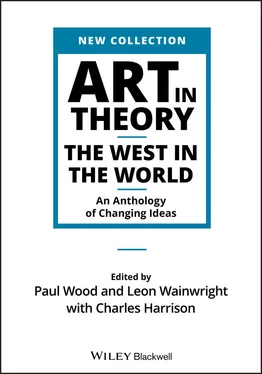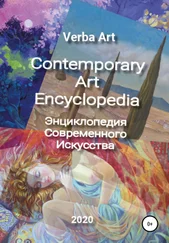Notwithstanding the engaging manners of the natives, we foresaw that we should make but a very short stay among them, because our captains could not obtain refreshments in any considerable quantity; which might be owing not so much to their scarcity upon the island, as to the difficulty of making our goods current for such valuable articles, when they could obtain them in exchange for arms and utensils. They had brought indeed a few yams, bananas, coco‐nuts, and shaddocks for sale, but they soon dropt that branch of trade. Our people purchased an incredible number of fish hooks made of mother of pearl, barbed with tortoise‐shell, but in shape exactly resembling the Taheitee fish‐hooks, called witte‐witte; some of which were near seven inches long. They likewise bought their shells, which hung on the breast, their necklaces, bracelets of mother of pearl, and cylindrical sticks for the ear. They had the neatest ornamental combs that can be imagined, consisting of a number of little flat sticks about five inches long, of a yellow wood like box, most firmly and elegantly connected together at the bottom by a tissue of the fibres of coco‐nut, some of which were of their natural colour, and others dyed black. These fibres were likewise employed in making a great variety of baskets, wrought with regular compartments of two colours, brown and black, or sometimes all brown, and ornamented with rows of round flat beads, which were made by cutting pieces of shells into that shape. The taste and the workmanship of these baskets were elegant in the highest degree, and varied into different forms and patterns. Those little stools, which serve as pillows for the head, were much more frequent here than at Taheitee; flattish bowls, in which they place their meat, and spatulas with which they mix up the bread‐fruit paste, were likewise in great abundance, and made of the club‐wood ( casuarina equisetifolia ), which had this name from supplying all the islanders in the South Sea with weapons. The clubs of the people of this isle, were of an infinite variety of shapes, and many of them so ponderous that we could scarce manage them with one hand; the most common form was quadrangular, so as to make a rhomboid at the broad end, and gradually tapering into a round handle at the other. But many were spatulated, flattish, and pointed: some had long handles and a blade which resembled the blade of a fleam; others were crooked, knobbed, &c. But by far the greatest part were carved all over in many chequered patterns, which seemed to have required a long space of time, and incredible patience, especially when we consider, that a sharp stone, or a piece of coral, are the only tools which the natives can employ in this kind of work. All the different compartments were wrought and divided with a regularity which quite surprised us, and the whole surface of the plain clubs was as highly polished, as if our best workmen had made them with the best instruments.
IIB4(vi) George Forster On the stone statues and wood carvings of Easter Island, March 1774
The stone statues of Easter Island have some claim to be among the most striking works of non‐European art encountered on any of the eighteenth‐century voyages of exploration. Although they had been seen from the sea by the Dutch navigator Roggeveen, Cook’s crew were the first to encounter them at close quarters. It is telling, however, that George Forster, precisely because they are figurative, and hence approach the territory of ‘Art’, is inclined to a negative judgement. Whereas the baskets and clubs he saw at Tonga would stand comparison with the best of European artisanal workmanship, Forster feels that any European artist would be ‘ashamed’ of the Easter Island stone figures for their lack of mimetic fidelity. However, a little further on in his account, Forster’s sympathy for the hardships of life on Easter Island leads him to a more positive assessment of some other, smaller, figurative works in wood which, he concedes, may show a glimmering of a ‘taste for the arts’. As he notes in conclusion, one of them, a lifelike carving of a human hand, was subsequently deposited by his father in the collection of the British Museum. ‘Mahine’, who is mentioned in this connection, was a young Tahitian who joined the Resolution in September 1773 intending to travel to England. In the event he sailed to New Zealand, Easter Island and the Marquesas, but left the ship when it returned to Tahiti in June 1774. A large painting of the stone statues by the voyage artist, William Hodges, who accompanied Forster and others around the island to make a visual record, is now in the National Maritime Museum at Greenwich, London. This extract is taken from George Forster, A Voyage Round the World [1777], edited by Nicholas Thomas and Oliver Berghof, Honolulu: University of Hawaii Press, 2000, vol. 1, pp. 305–6, 309–10 and 312–14.
After staying among the natives for some time on the beach, we began to walk into the country … About fifteen yards from the landing‐place we saw a perpendicular wall of square hewn stones, about a foot and a half or two feet long, and one foot broad. Its greatest height was about seven or eight feet, but it gradually sloped on both sides, and its length might be about twenty yards. A remarkable circumstance was the junction of these stones, which were laid after the most excellent rules of art, fitting in such a manner as to make a durable piece of architecture. The stone itself of which they are cut is not of great hardness being a blackish brown cavernous and brittle stony lava. The ground rose from the water’s side upwards; so that another wall, parallel to the first, about twelve yards from it and facing the country, was not above two or three feet high. The whole area between the two walls was filled up with soil and covered with grass. About fifty yards farther to the south there was another elevated area, of which the surface was paved with square stones exactly similar to those which formed the walls. In the midst of this area, there was a pillar consisting of a single stone, which represented a human figure to the waist, about twenty feet high, and upwards of five feet wide. The workmanship of this figure was rude, and spoke the arts in their infancy. The eyes, nose, and mouth were scarcely marked on a lumpish ill‐shaped head; and the ears, which were excessively long, quite in the fashion of the country, were better executed than any other part, though a European artist would have been ashamed of them. The neck was clumsy and short, and the shoulders and arms very slightly represented. […]
About sun‐set we left the watering‐place, and walked to the cove where our boat lay at a grapnel. In our way we passed over the area on which the single pillar before‐mentioned was placed. A few natives who still accompanied us, made signs that we should descend, and walk in the grass at the foot of the pedestal; but seeing that we did not care to understand their gestures, they made no other attempt to oppose our progress. We put some questions to the most intelligent persons among them, concerning the nature of these stones, and from what we could understand, we concluded that they were monuments erected to the memory of some of their areekees, or kings … To the westward of the cove, there was a range of three pillars, standing on a very large elevated area or pedestal. This range the natives distinguished by the name of hanga‐roa , and the single pillar they called obeena . About ten or twelve people were seated at a little distance from the last, round a small fire, over which they had roasted a few potatoes. These served for their supper, and they offered us some of them as we passed by. We were much surprised with this instance of hospitality in so poor a country, especially when we compared it to the customs of civilized nations, who have almost entirely laid aside all tender feelings for the wants of their fellow‐creatures. […]
Читать дальше












